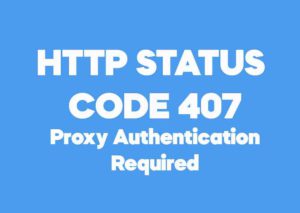Credit cards have become some of the most convenient ways to make purchases, manage your expenses, and build your credit score. However, failing to control your spending can quickly take you over your planned budget and lead to unwanted or unplanned shopping sprees. The fastest way to keep your spending spree in check is by tracking your credit card spending. That said, here are ideas on how to limit these expenses and keep them in check.
5 Helpful Ways to Track Your Credit Card Spending
1. Monitor Purchases
- Checking Your Bank Statements. This is the easiest way to get information about what you bought in the last month. Check your purchases every time you get your statements every month. This will give you a rough idea of how much money you use on bills and what goes into unnecessary spending. Ensure you shred your paper statements after you finish them to avoid identity theft.
- Review Your Accounts. If you use online banking, set a day weekly when you can review your accounts. Log in to the accounts and check what you spent the previous week. This enables you to track your purchases without waiting for the statements. If you are forgetful, schedule the day by programming a reminder on your phone or computer.
- Keep Receipts. While this is an old-fashioned way to monitor your spending, it’s a great trick. Save all the receipts from your credit cards and compare them against your monthly statement. This will prevent you from losing money and detect any fraudulent activities. Once you have verified the purchases, you can dispose of the receipts. Report to your bank if you can’t verify suspicious charges. Reporting fraud early will prevent you from paying expenses.
2. Build a Monthly Budget
You need to list every expense you make, whether small or significant, each month, ranging from fuel bills, groceries, and EMIs. A monthly budget will show you a clear idea of your expenses. Techniques to manage your monthly expenses include:
- Spreadsheet Budget. Creating a spreadsheet budget that consists of two columns. The first column consists of fixed expenses and the other expected expenses. Doing this lets you track where your money is going and reduce expenses. You can do this by hand or use Excel or google sheets. If you enjoy writing, look for free printable templates available online.
- Zero-Sum Budgeting. This involves using the previous month’s income to fund the current month’s expenses. For this, you will distribute the income to be spent on expenses such as savings, groceries, and investments. This budgeting technique will help you optimize expenses.
3. Categorize the Purchases
You could spend your money on all types of things, some important and others unnecessary. First, classify your expenses based on debit or credit card. For this to work, you need to consider your income for comparison. If your expenses excel your income, you must do away with some of them.
For example, you could divide your expenses into categories such as food, insurance, rent, or utilities. This will help you do away with unnecessary expenses and reduce reckless spending.
Once you’ve categorized, note where you are spending more money. Commit to cutting back if you are spending a lot on unnecessary things. For instance, make your coffee at home if you spend more on coffee trips. However, avoid having too strict rules such as only eating twice a month. This could lead to overcompensating and spending more.
4. Use a Tracking Tool
If spreadsheets aren’t your favorite, you can use other tracking tools to view your spending. Some of these tools include:
- Online Banking App. Enroll in online banking, which allows you to view your accounts anytime. Ensure that your login information for your banking accounts is a secret. Anyone with your password could easily take your money. To avoid easy access to your banking accounts, you could also register your credit cards to mobile payment apps such as Google Pay and Apple Pay, which are safe, simple, and versatile. In addition, with banking apps, one can view their transactions without waiting for monthly statements. If you want to know what brick-and-mortar stores accept Apple Pay or have questions like does Aldi take Apple Pay, you can easily find answers on the web.
- Credit Card Alerts. Credit card companies send text or email alerts whenever you make a purchase. It’s a great way to rein you in whenever you are about to spend more than planned. Personalize the credit card alerts, such as setting your purchase to $150 daily. These alerts will also help you catch any fraudulent activities happening with your phone.
- Spending Tracker App. Downloading a spending tracker app for your purchases. Tracker apps show you a handy readout of all your credit transactions, especially if you have more cards. Popular budgeting apps include Pocket Guard, Mint, and You Need a Budget. There are also more advanced apps that will track your complete financial health. They link your other accounts and review your income, investments, cash flow, and spending.
5. Request a Credit Limit Decrease
It is very tempting to go over budget when using credit cards, especially if you are not used to controlling your budget. In this case, you should avoid credit limits that are way higher than the usual expenses. To stay within budget, contact your bank and have your spending limit lowered.
- For instance, if your monthly spending is an average of $3,000 and your card limit is $12,000, your limit could be lowered to $5,000. This limit will be able to cover your expenses and also leave extra for unexpected purchases.
- However, consider this a last resort since lowering your credit limit will also lower your credit score. Try other budgeting tips before settling down on this. In addition, you could have your limit raised again if you get better at budgeting.
Conclusion
One can use several low-effort methods to track expenses and purchases. First, create a system that tracks how your money is being used for short-term and long-term financial goals. In addition, don’t use your credit card to buy things you can’t afford. Bad debts can take much time to clear. Also, try to find enticing reward points or cashback offers if you use your credit card a lot. These methods will help you keep your spending in check and ensure you maintain a good credit card score.





Be First to Comment